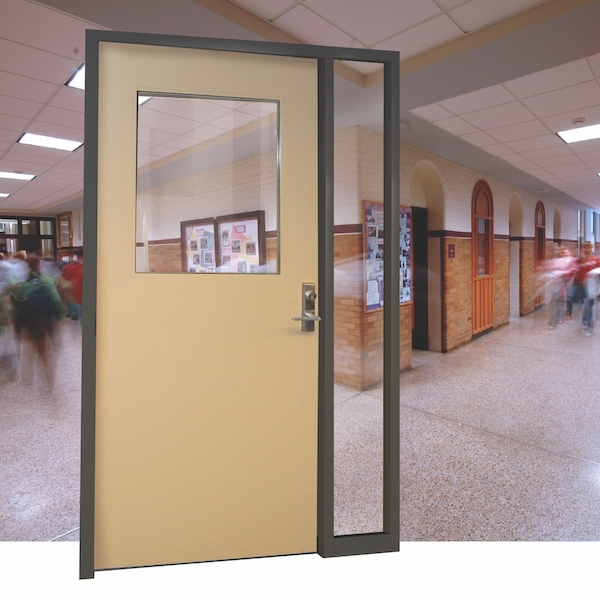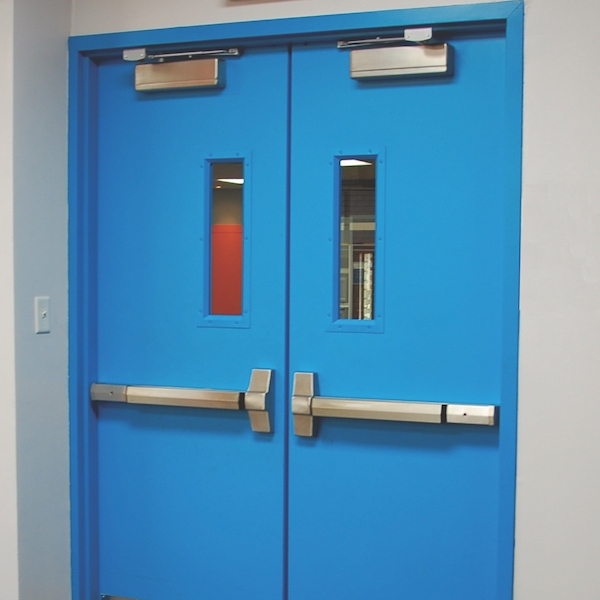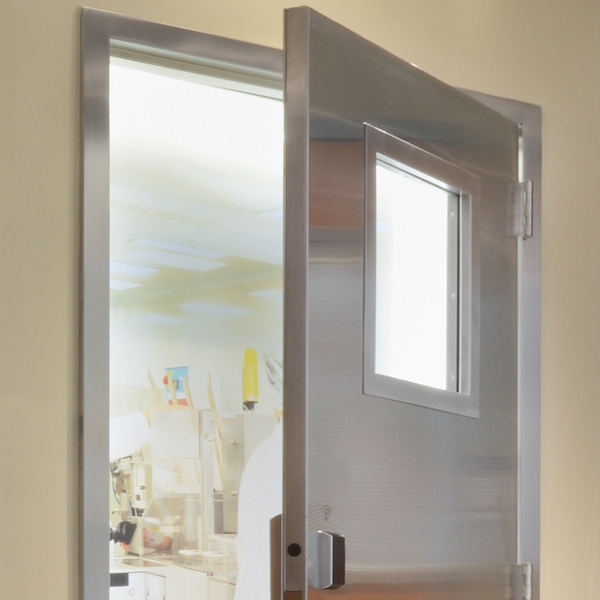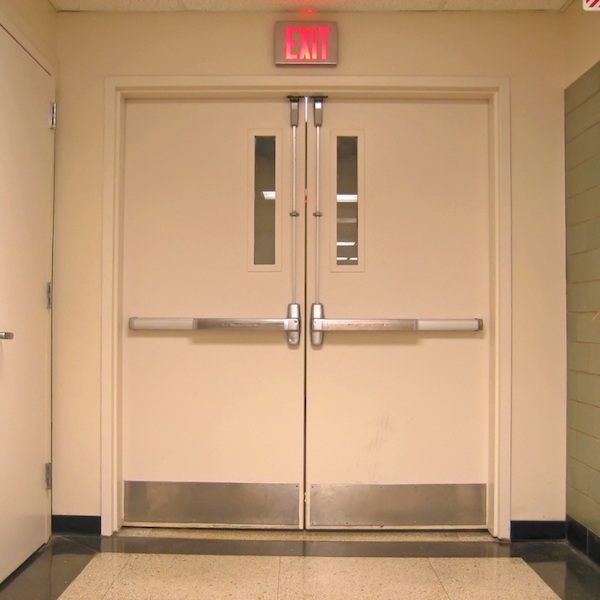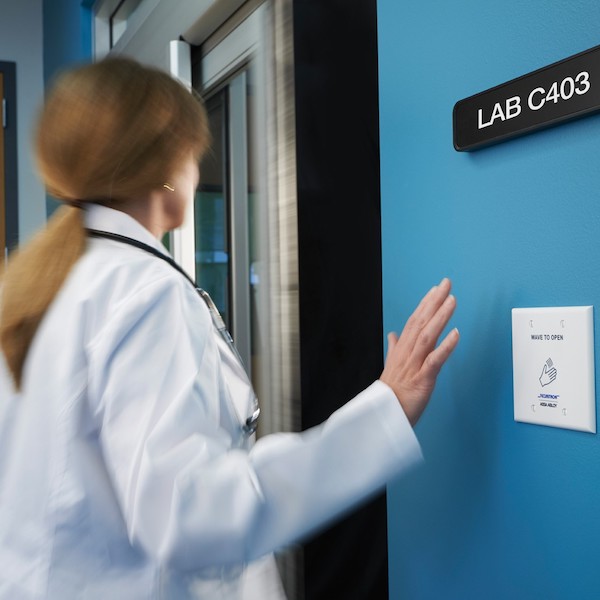Door Types
Steel doors and frames are often specified as a standard product. However, design professionals are increasingly putting a new twist on an old classic by modifying them for better aesthetics or performance. Steel doors and frames are also available with multiple specialty attributes, such as acoustic and fire-rated, or bullet and blast resistant.
The SDI door types guide helps architects and builders choose the right steel door for each application based on design, function, and performance needs. Click on each for more information and a list of SDI Certified manufacturers.
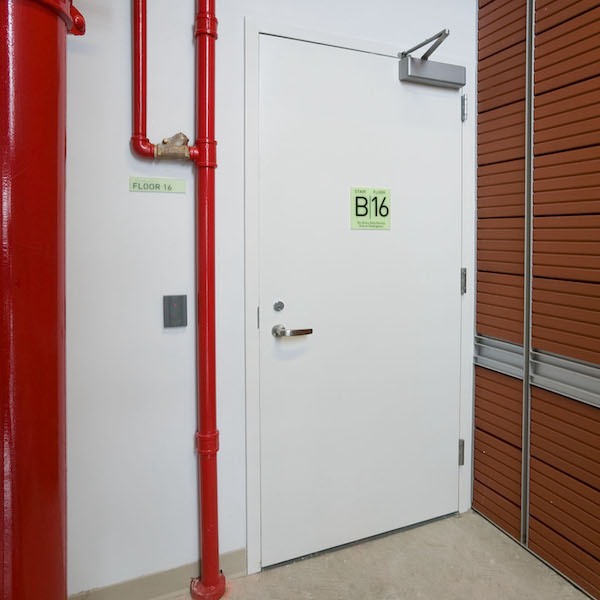
Fire-Rated
Fire-rated doors and frames play a vital role in keeping people safe and minimizing property damage. Hollow metal is the only material widely available as a 3-hour fire-rated door. Browse a variety of resources to help bring you up to speed on fire-rated doors and frames.
Custom
Steel is incredibly durable and versatile. Custom steel doors and frames may be specified for function – perhaps with a unique width, height, or thickness. They may also be selected to bring a unique design element to the building for historic or aesthetic appeal.
Forced Entry
These doors have been tested to keep bad guys out. There’s a misconception that forced entry doors must look imposing, but they actually look much like standard doors because the heavier duty steel and hardware aren’t obvious to the casual observer.
Tornado Resistant
There are more than 1,000 tornados in the United States each year, most of which can easily destroy standard doors. Steel is the most readily available door material that passes the FEMA 361 and ICC 500 tornado test for wind speeds of up to 250 mph.
Acoustic (STC)
Architects are keeping the peace by specifying acoustic doors in noisy environments. Places like music rooms, schools, conference rooms and hotels can all benefit from reduced sound transfer. And there’s no need to overspecify. A little sound resistance – say, STC 42 – can go a long way.
Energy Efficient
On the cusp of meeting your energy efficiency goals? Energy efficient steel doors have a lower U-factor and can be the difference maker. By breaking the transfer of hot or cold outside temperatures, they reduce energy costs and increase comfort indoors.
Bullet Resistant
You’ll most likely never need a fire extinguisher, but you’ll be really glad to have one if you ever do. The same applies to bullet resistant doors. School and government architects are specifying bullet resistant doors to keep people safe if there’s an active shooter.
Blast
Many military, government, and industrial facilities are at risk of an explosion, whether accidental or intentional. Blast resistant assemblies protect the occupants and building from devastating shrapnel. Blast resistant doors are also available in fire or windstorm rated, bullet resistant, and with vision lights.
Wood Grain Finish
These sturdy steel doors are engraved and stained to look just like wood. People usually think they are real wood unless they look closely. Faux wood doors are ideal for high-use openings that would benefit from the appearance of wood with the durability of steel.
Hurricane Resistant
They meet the requirements of ANSI A250.13 and the Florida Building Code with door assemblies that can withstand winds and wind-born debris up to 170 mph. Hurricane rated doors are available flush, paneled, or glazed, and also prefinished with a durable coating. They are also available fire-rated.
Prefinished
Reduce prep time and VOC’s at the jobsite and ensure a quality paint job with prefinished doors. These commercial-grade finishes comply with SDI standards for weather resistance and adhesion, and are available in any color.
Stainless Steel
Specified for their sleek appearance, stainless steel doors are also rust resistant and hygenic. Architects often choose stainless steel for a modern design, or where moisture or cleanliness are a concern such as food or pharmaceutical processing plants or hospitals.
Temperature Rise
In the event of a fire, temperature rise doors minimize the transfer of heat to the non-fire side of the door so people can safely escape from a burning building. They are commonly found in the stairwells of high rise buildings.
Lead Lined
Lead-lined doors are used in medical office buildings and hospitals to protect people from the radiation that emits from x-ray machines. They are also used for radiation shielding where security is a concern, such as aerospace and defense environments.
You may also want to see our Specialty Steel Doors course for more information. View a PDF of the course now or take the course for AIA credits.






